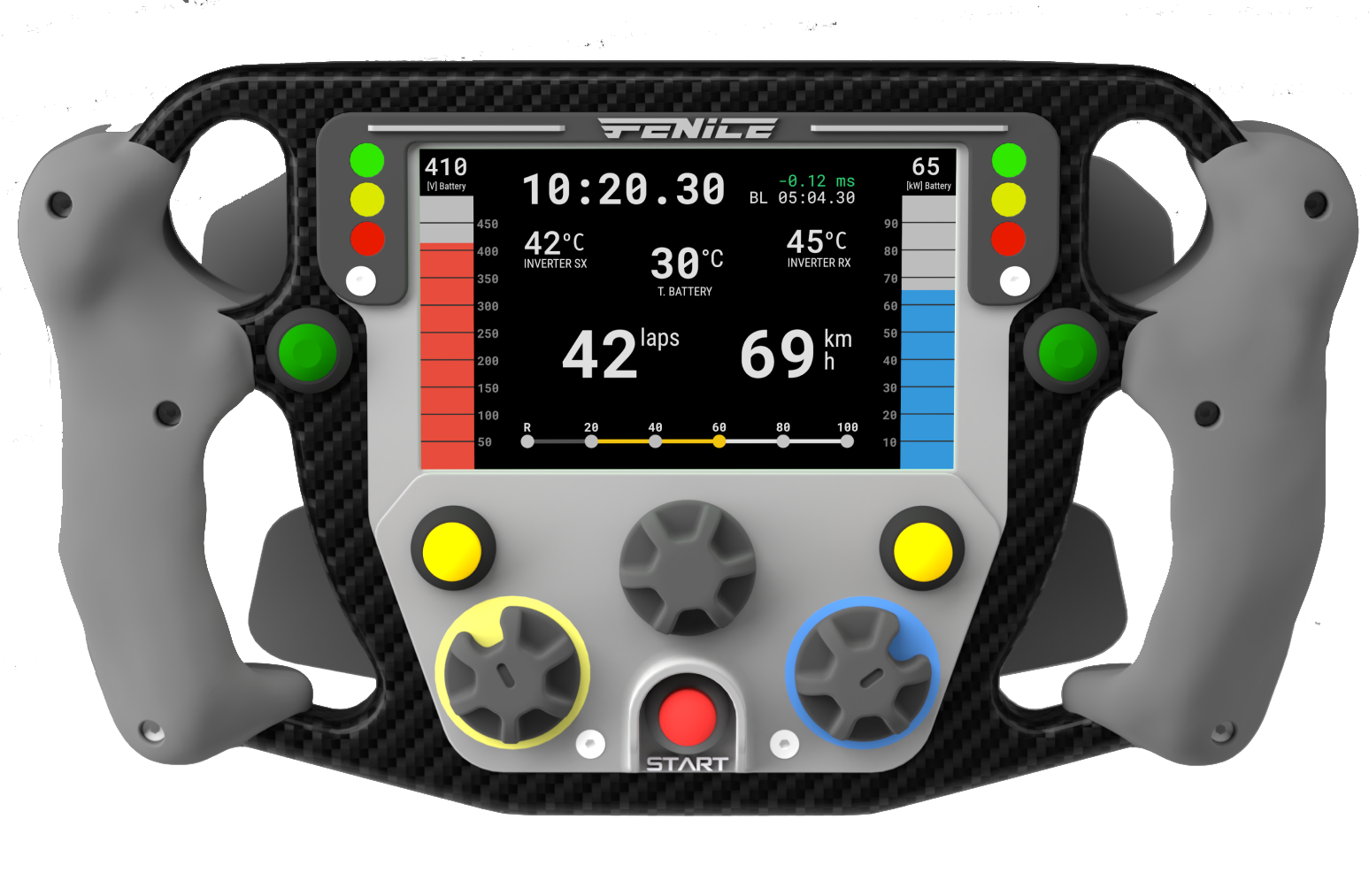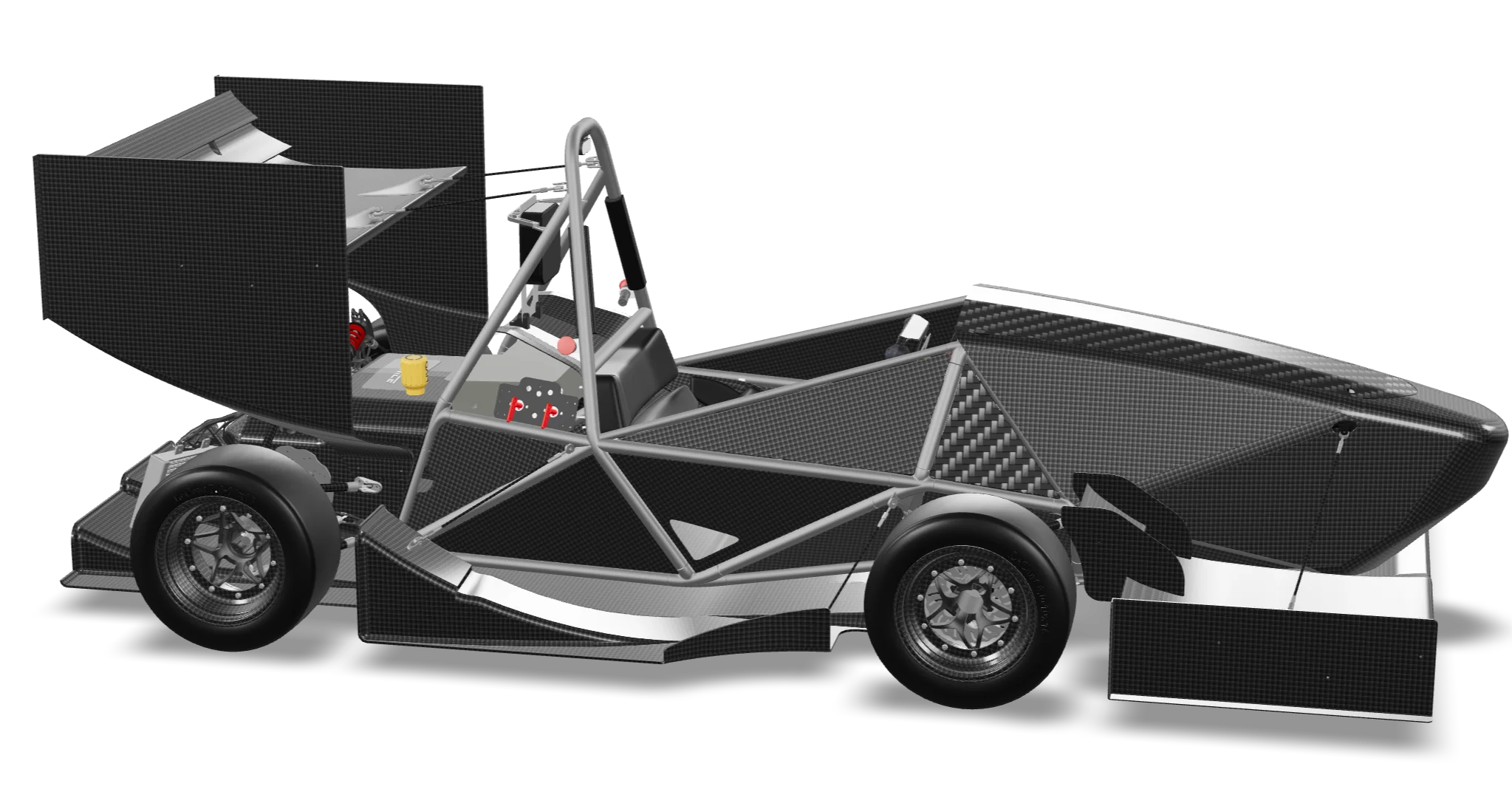Chimera
Chimera is the oldest creation of the E-Agle Trento Racing
Team, designed and built specifically for Formula SAE Electric
competition. The car features an innovative, high-performance
design and incorporates advanced technologies to maximize
performance, efficiency and reliability. Chimera has a sleek
and aerodynamic carbon fiber body that is lightweight and
strong. It is powered by a custom-designed electric powertrain
that delivers impressive acceleration and top speeds. The
powertrain includes an electric motor, inverter, and battery
pack, all optimized for maximum performance and efficiency.
The car is equipped with advanced suspension and braking
systems, enabling precise handling and control on the track.
The team has also incorporated advanced data acquisition and
telemetry systems into the car, which allow real-time
monitoring of the vehicle's performance and the ability to
make changes and improvements as needed. Chimera was designed
and built entirely by team members, who invested countless
hours of research, design, testing and fabrication to create a
car that represents the cutting edge of electric race car
technology. Overall, Chimera is a remarkable achievement and a
testament to the skills, knowledge and dedication of the
E-Agle Trento Racing team. Their hard work and innovation
resulted in a truly impressive vehicle that shows the
potential of electric race car technology.


Rear transmission
Dual engine with electronic differential and dynamic
traction control (Torque Vectoring System)
Battery
6.5 kWh, air-cooled

Dimensions
Length: 2.70m
Width: 1.50m
Wheelbase:
1.54m
Weight: 240kg

Velocity
Maximum: 130km/h
0-100km/h: <3s
Wheels
LeCont 6x16.00 - 10” (soft compound)
Specifiche tecniche
Velocity
Maximum velocity: 130 km/h
0-100km/h: <3s
Rear transmission
Dual engine with electronic differential and dynamic traction
control (Torque Vectoring System)
Battery
Maximum power: 80 kW (imposed by the regulation)
Maximum
possible power: 160 kW
Power source: 504V
Capacity:
6.5kWh
Weight: 43kg
Air-cooled
Dimensions
Length: 2.70m
Width: 1.50m
Wheelbase: 1.54m
Weight:
240kg
Chassis
Tubular frame with steel joints, 3D printed
Wheels
LeCont 6x16.00 - 10” (soft compound)
Chimera's steering wheel
Our steering wheel is one of the highlights of Chimera, winner
of the "Best Human-Machine Interaction Concept" presented by
Lamborghini in 2018. The steering wheel features a 4.3" color
LCD Display, 4 buttons, 2 paddles, 3 knobs. Everything is
managed by a Raspberry Pi Zero W with custom PCB and shown on
screen via a graphical user interface built with Qt5.10.

Additive manufacturing
Next-generation metal and plastic 3D printing, combined with
topological optimization techniques and artificial
intelligence, has made it possible to produce unique and
innovative components, saving up to 60 percent of weight
compared with production using traditional technologies.



